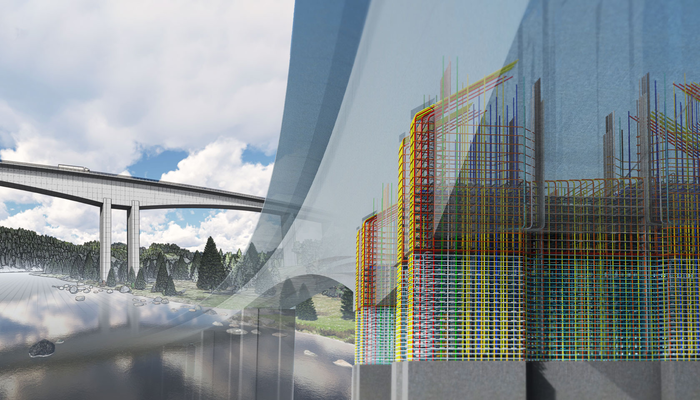Temple Architecture in India: Significance and Types
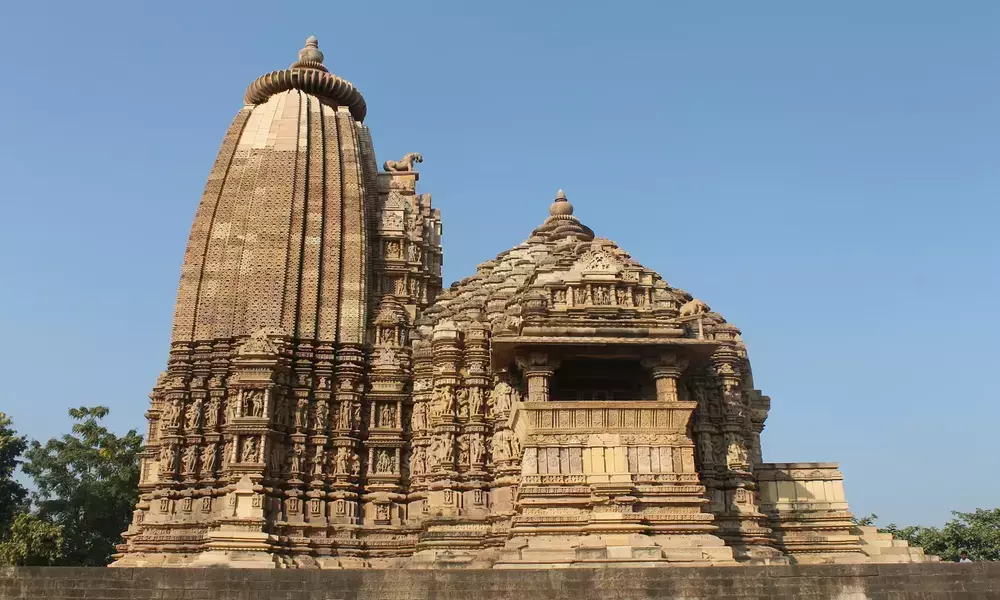
Table of Contents
India is a land of diverse cultures and religions, and one of its most significant cultural aspects is its temple architecture. These structures have played a crucial role in shaping the country's history and culture. From the towering Gopurams of the Southern part of India to the intricate carvings of North India, the beauty of temple architecture in India is truly awe-inspiring. In this blog, we will explain various styles of temple architecture in India, highlighting the unique features of each type of temples and presenting one example from each region.
Temple architecture in India plays a crucial role in preserving and promoting Indian cultural heritage. These temple designs represent a fusion of different architectural styles, from complex sculptures of temples in southern India to imposing arrows of temples in northern India. Local materials used in the temple structure, such as stone and wood, add authenticity and relation to the region's natural environment.
Philosophy of Temple Design in India
Historically, temples in India served as centres of worship, spiritual practice, and community gatherings. Initially, they were built as simple structures and later evolved into more elaborate and intricate architectural marvels. Temples were patronised by kings, rulers, and wealthy individuals who sponsored their construction and supported the temple communities. Regional and dynastic styles influence the design of temples of ancient India.
Today, Indian temple architecture styles persist to attract devotees and tourists worldwide, offering glimpses into India's rich historical, architectural, and religious traditions. They provide a place for worship, spiritual contemplation, and participation in religious rituals and festivities.

The Hindu temple architecture in India is renowned for its profound symbolism, intricate detailing, and spiritual significance. Common components found in Indian temples include the sanctum sanctorum (Garbhagriha), representing the sacred space where the deity resides, and the towering vimana or shikhara, symbolising the celestial abode of the god. The mandapa serves as an assembly hall for rituals and ceremonies, while gopurams mark the entrance with elaborate sculptures. Murtis and images of deities are beautifully crafted and worshipped, while the mandala layout and prakarams provide a structured framework for the temple complex. Some temples also feature a separate kalyana mandapa for wedding ceremonies. Together, these elements create a spiritually significant and awe-inspiring ambiance, reflecting the cultural and religious importance of Indian temple architecture.
- Representation of Deities: Temples in India are built to honour and worship various deities and are represented through sculptures, idols, and other art forms.
- Sacred Space: Temples are sacred spaces where devotees can connect with the divine through prayer, meditation, and other forms of worship. They are designed as places where the spiritual and material worlds intersect, and where one can experience peace and transcendence.
- Architecture and Design: Temples in India are designed and built according to ancient Vedic ideals that emphasise harmony, symmetry, and balance. Temples are frequently created by precise standards, such as the Vaastu Shastra, which describes the principles of temple construction, such as temple orientation, deity placement, and the use of holy geometry.
- Community Gathering Place: Temples also serve as community gathering places, where people come together to celebrate festivals, perform charitable acts, and engage in other social and cultural activities.
Also Read: Functional And Aesthetic: 10 Impressive Parametric Buildings From Around The World
Types of Temple Architecture
From the majestic northern Himalayas to the serene coastal areas to the south, travel from vibrant western states to culturally rich eastern states the architecture of the temple in India has notable variations and distinct features. Here are the typologies of temple architecture in India, emphasising features of different regions.
1. North Indian Temple Architecture Style
North Indian temple architecture in India is known for its grandeur and magnificence. The temples in this region were constructed using red sandstone and white marble, which lend them a distinct look. The influence of Mughal architecture is seen in the design of North Indian temples, such as arched entrances and domes.
Birla Mandir Temple, Jaipur
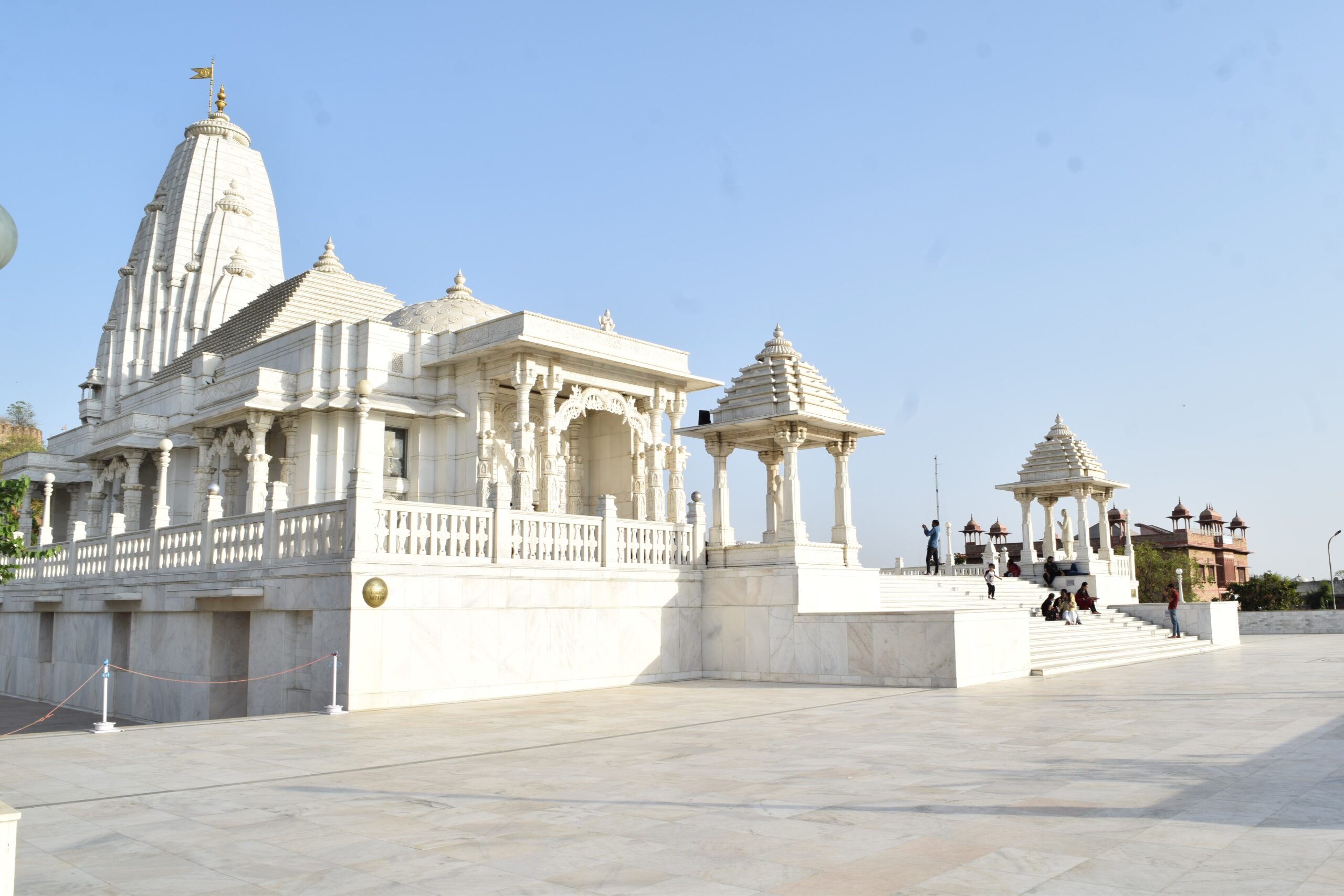
Design Features:
- Intricate carvings depict mythological figures and scenes.
- The three-dome structure represents different aspects of spirituality.
- Towering shikhara creates a striking silhouette.
- Spacious prayer hall adorned with ornate columns and sculptures.
- Stunning stained glass work adds vibrancy and religious motifs.
One of the most famous North Indian temples is the Birla Mandir Temple in Jaipur, Rajasthan. Built-in 1988, the temple is dedicated to Lord Vishnu and his companion Lakshmi. It blends traditional Rajasthani and Mughal architectural traditions, with beautiful carvings, marble façade, and magnificent domes showcasing the region's rich heritage and skill.
2. South Indian Temple Architecture Style
South Indian temple architecture in India is home to some of the most magnificent temples in India. The temples in this region are characterised by their towering gopurams or gateways that lead to the inner sanctum. Usually, these gopurams are decorated with elaborate carvings and sculptures representing numerous Hindu myths. They are fine examples of Dravidian architecture, characterised by pyramid-shaped towers, ornate carvings, and intricate sculptures.
Meenakshi Temple, Madurai
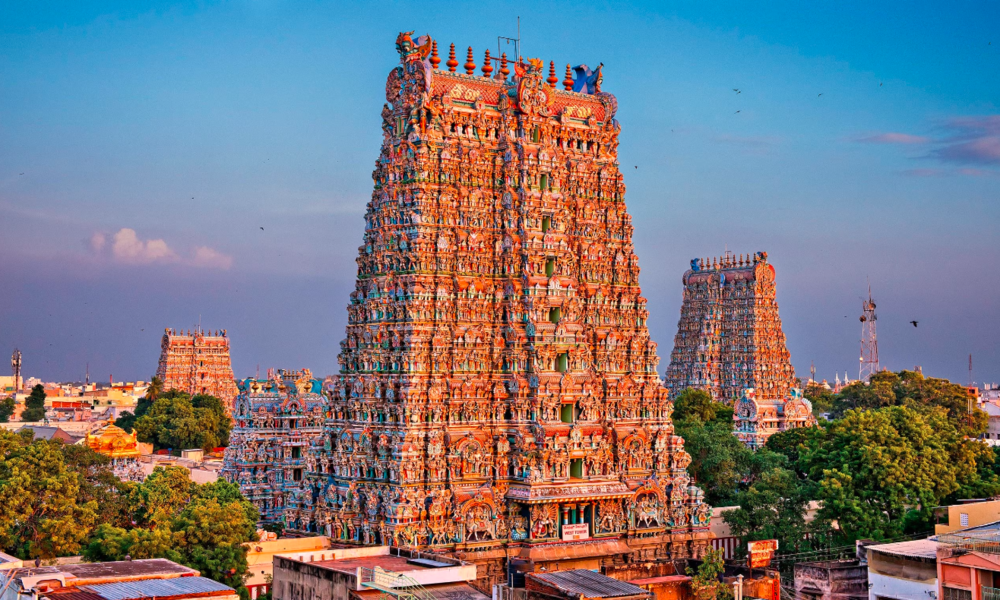
Design Features:
- The main temple is made from pink sandstone and white marble
- Several mandapas are used for religious ceremonies and events
- Mandapas decorated with exquisite carvings and sculptures depicting Hindu mythology scenes
- Gajendra Pith, a massive stone platform with life-size elephant statues
- Represents the mythological story of Gajendra Moksha
- Musical fountain with water, light, and sound shows
The Meenakshi Temple in Madurai, Tamil Nadu, is a revered and iconic temple of South India dedicated to Lord Shiva and goddess Meenakshi. With its architectural grandeur and spiritual meaning, it attracts millions of enthusiasts and tourists throughout the world.
3. East Indian Temple Architecture Style
East India is renowned for its elegant and enchanting temples, which highlight the region's rich cultural and architectural heritage. The temples feature intricate sculptures, elaborate sculptures and unique styles, reflecting dynasties and eras. Their elegance resides in their attention to detail, graceful proportions, and spiritual atmosphere, weaving together art, history, and religious devotion.
Konark Sun Temple, Konark
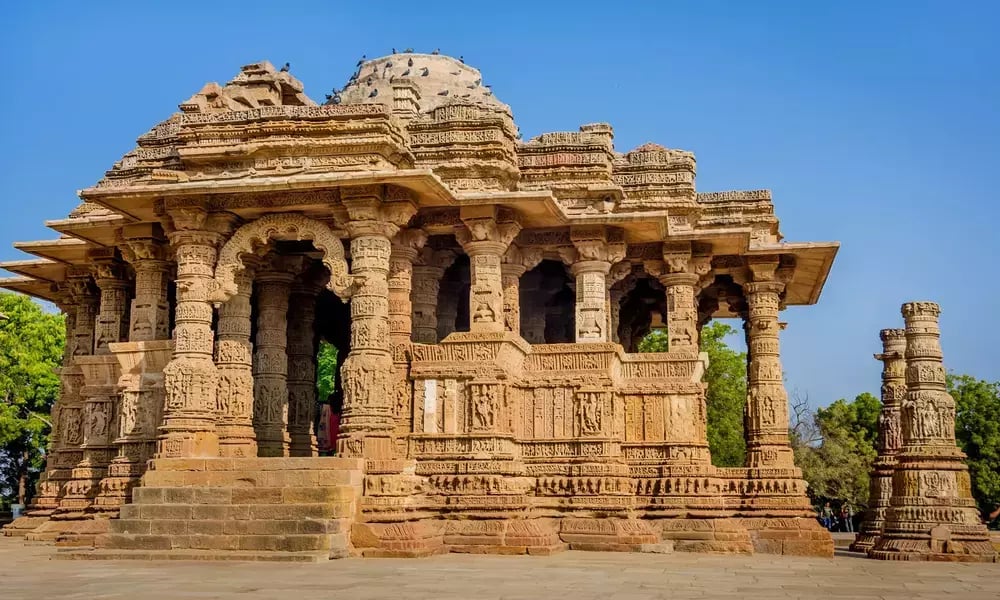
Design Features:
- The main temple is like a chariot, made from black granite
- Natya Mandap, a large hall for dancing and musical performances
- Supported by 56 intricately carved pillars depicting scenes from Hindu mythology
- Jagamohana, a porch-like structure attached to the main temple
- Adorned with elaborate carvings and sculptures
- Nata Griha, a small hall for religious ceremonies
- Twelve giant wheels supporting the temple]
The Konark Sun Temple in Odisha, India, is a 13th-century architectural masterpiece devoted to the Sun God Surya. Built by King Narasimhadeva I, it is adorned with stone sculptures, complex architecture and a unique representation of the float of the temple complex, in the shape of a colossal wagon, and has sculptures and floral motifs. Despite centuries of devastation, the temple remains a UNESCO World Heritage Site.
Also Read: Exploring the 8 Most Innovative BIM Projects in the Middle East
4. West Indian Temple Architecture Style
The West Indian Temple Architecture in India is famous for its captivating beauty and unique Gujarat, Rajasthan and Maharashtra architectural styles. These temples present a rich cultural and spiritual heritage, with complex sculptures, bright colours and ornate details. Each structure is a reflection of the artistic brilliance and dedication of the artisans who built it.
Shri Mahalakshmi Temple, Kolhapur
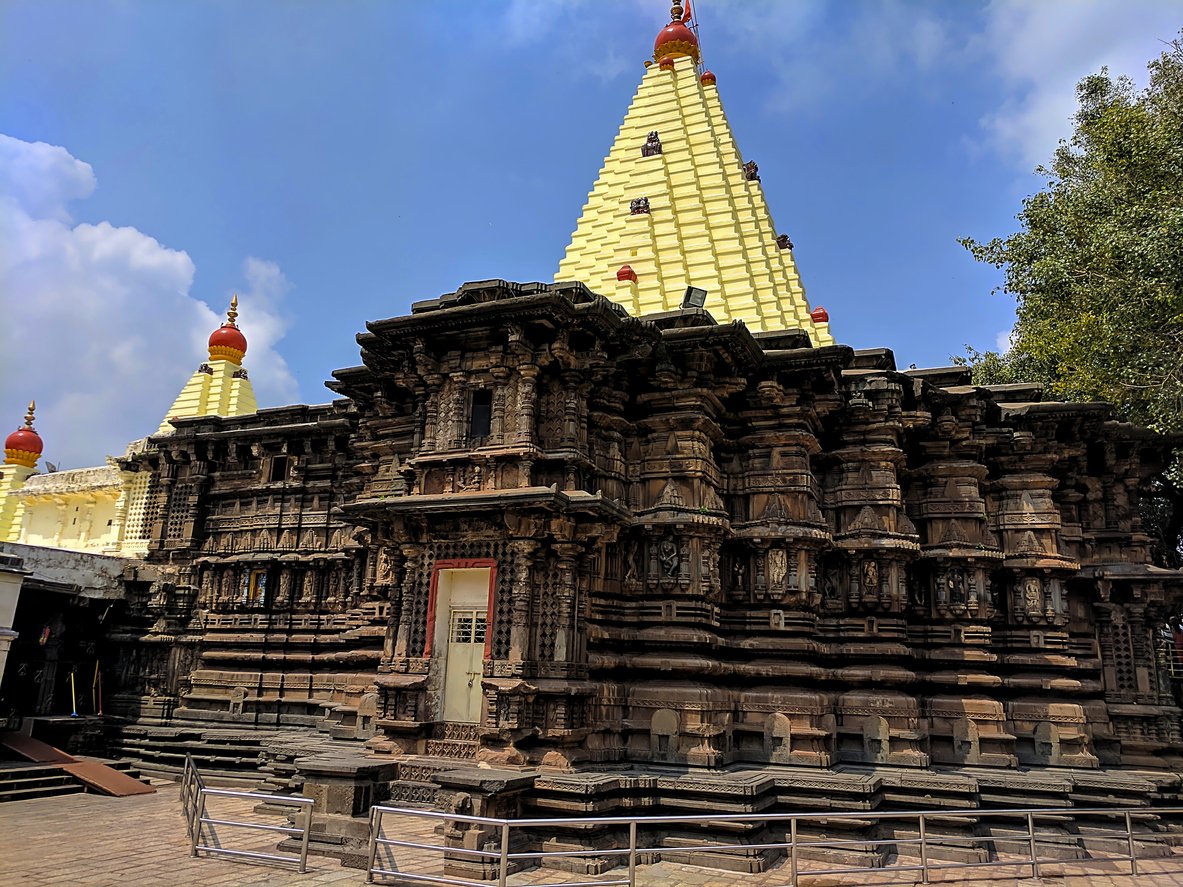
Design Features:
- The main temple is made from black stone, adorned with intricate carvings and sculptures
- Several mandapas used for religious ceremonies, decorated with exquisite carvings and sculptures depicting Hindu mythology scenes
- Impressive gopurams (gateway towers) adorned with intricate carvings and sculptures
- Garuda Mandap, a large hall in front of the main temple, adorned with beautiful carvings and sculptures of Garuda
- Shikhar, towers over the sanctum sanctorum, decorated with beautiful carvings and sculptures
The Shri Mahalakshmi Temple in Kolhapur, Maharashtra, is a revered symbol of devotion and architectural splendour. Dedicated to the goddess Mahalakshmi, it is one of India's most important Shakti Peethas. The temple's intricate carvings, beautiful sculptures, and Dravidian style showcase Maharashtra's rich cultural heritage. It attracts thousands of devotees seeking blessings and solace.
5. Central Indian Temple Architecture Style
The centre of India houses many beautiful temples, highlighting the wealth of Indian architecture. These temples, including Madhya Pradesh and Chhattisgarh, highlight intricate sculptures, spiritual symbolism and artistic mastery. The cultural and spiritual heritage of the area is explored through historical significance, architectural characteristics and spiritual experiences for visitors and devotees.
Khajuraho Temples, Madhya Pradesh
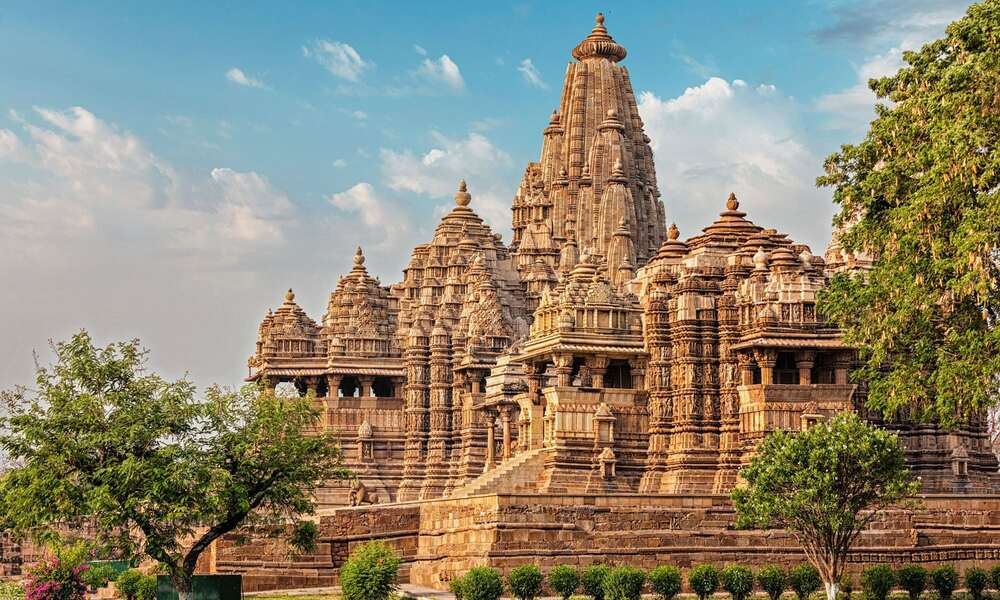
Design Features:
- Khajuraho temples showcase Nagara-style architecture with tall spires representing Himalayan peaks
- Built using locally quarried sandstone of pale yellow-brown colour
- Arranged into three groups (Western, Eastern, and Southern) with temples dedicated to Hindu deities and Jain temples.
- Famous for erotic sculptures depicting various sexual positions, symbolising the acceptance of physical love in human life.
- Complex and explicit sculptures exhibit the prowess of the artisans
The Khajuraho temples, located in India's Madhya Pradesh, are famous for their exquisite blend of art and architecture. Built between the 10th and 12th centuries by the Chandela Dynasty, these temples are an outstanding example of ancient Indian handicrafts. The temples of Khajuraho are distinguished by their complex sculptures, in particular the depictions of human figures.
Also Watch : BIM Talks | EP 04 | The Use of BIM in Building Mega-Structures
In conclusion
The significance of Indian temple architecture in India cannot be overvalued. The architectural wonders of Indian temples, both old and modern, captivate with their grandeur, meticulous craftsmanship and attention to detail. The precise details, symmetrical arrangements and harmonious proportions of Indian temple architecture continue to inspire architects and artists worldwide.
Do you aspire to create architectural marvels such as those featured in this blog? If so, look into Novatr's Master Computational Design Course. The computational design creates complicated patterns and decorative features that combine traditional beauty with modern efficiency and precision. Discover industrial practices, advanced tools, and computational theory to visualise and easily design iconic structures.

 Thanks for connecting!
Thanks for connecting!
-1.png)
.png)
.png)

